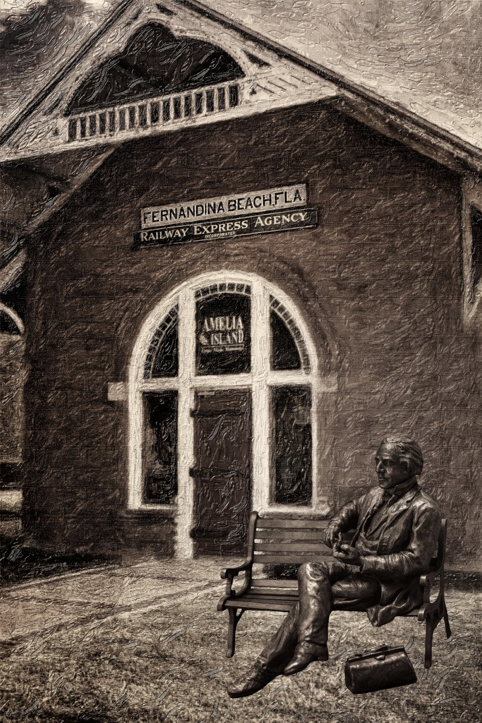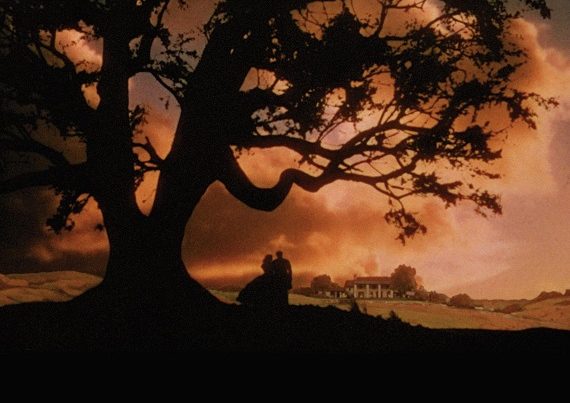
There once were more than fifteen hundred Confederate memorials, including over seven hundred major monuments and statues, erected all across the United States and Canada, as well as in such far-flung locations as Brazil, Ireland and Scotland. These memorials were erected from 1867 to 2017, and during the first century and a half of their existence, only five of them were ever removed for one reason or another. However, beginning with the 2015 controversy over the Confederate Battle Flag in Columbia, South Carolina, a veritable firestorm has arisen that seeks to do away with everything related to the Confederacy. Since that year, over a hundred and fifty of these memorials have been removed by law or destroyed by vandals. The Confederate memorials that still remain in place, as well as the new targets that are now being added to the list of objectionable images, have all become orphans of this raging storm.
The anti-Confederate activists make the false claim that all such memorials were put in place from the post Reconstruction era through the period of de jure segregation in the South and were erected merely as a political paean to systemic racism and white supremacy. Actually, the first such memorial was erected at the Indian Mound Cemetery in Romney, West Virginia, in September of 1867 to honor those from Hampshire County who had fallen fighting for the Confederacy. The last Confederate memorial, the Unknown Alabama Confederate Soldiers Monument, was dedicated in August of 2017 in the privately-owned Confederate Veterans Memorial Park near the small city of Brantley. Both of these memorials, as well as virtually all the others, were dedicated to honor those who fought and died defending their homes and their county, rather than the disingenuous charge that the individuals they represent served only the cause of slavery and racism.
Fortunately, one Confederate memorial that made its appearance just prior to the current delusional deluge has for the most part escaped the attention of the howling mob. This statue is unique, however, as it is the only one which honors a Jewish Confederate, David Levy Yulee of Florida. The bronze statue that was dedicated in June of 2014 depicts Yulee seated on a bench in front of the reconstructed train depot in Fernandina Beach, Florida. The site is the original eastern terminus of Yulee’s Florida Railroad Company, the rail line that operated from 1853 to 1866 between Amelia Island and Cedar Key on the Gulf of Mexico. While being a supporter of Florida’s secession, Yulee served in neither the Confederate government nor its military. His real fame was as one of the founders of both Florida statehood and its railroad network.
Yulee was born in the Danish West Indies in 1810 and his parents, Sephardic Jews from Morocco and Spain, immigrated to the territory of Florida nine years later. Yulee first attended a private school in Virginia and then returned to Florida where he studied law in St. Augustine. An ardent proponent of Florida statehood, Yulee served as its Territorial delegate in Congress from 1841 until Florida’s admission to the Union in 1845 and was then was elected as one of the State’s first U. S. senators . . . also becoming America’s first Jewish senator. He was reelected to the Senate in 1855 but when Florida seceded in 1861, he, along with his cousin and co-religionist Senator Judah P. Benjamin of Louisiana, resigned their seats.
Unlike Benjamin, who was initially appointed as attorney general in the new Confederate government and later became its secretaries of war and state, Yulee returned to his plantations and railroad ventures. In 1853, Yulee had founded the state’s first train line, the Florida Railroad Company, and later three more companies, Tropical Florida Railway, Fernandina & Jacksonville Railroad and Peninsular Railroad, and was called the “Father of Florida’s Railroads.” In addition, Yulee also owned large sugar, cotton and citrus plantations all across northern Florida. These were located at Cedar Key and Homosassa on the Gulf of Mexico and his Cotton Wood plantation near Jacksonville, as well as two others around his home in Fernandina Beach on Amelia Island. The nearby town of Yulee was later named in his honor, as was Levy County on the Gulf coast.
Even though he was a strong supporter of the Confederacy, Yulee clashed with President Davis during the War over the matter of his rail lines. Davis had decided that the lines in Florida were less essential to the war effort than those elsewhere and ordered that parts of the Florida tracks be torn up and shipped to other areas in the South. Yulee defied the order, and it was said that Davis had even considered placing him under arrest for treason. At the end of the War, however, Yulee was arrested by Union troops and imprisoned for almost a year in Fort Pulaski near Savannah, Georgia, on the charge of having given aid to President Davis. This involved an incident that took place at Yulee’s Cotton Wood plantation on May 22, 1865.
On that date, the Confederate military detachment carrying President Davis’ baggage and personal papers, as well as the million dollar’s in gold and silver remaining in the Confederate treasury, arrived at the Yulee plantation. Yulee himself was not there but his wife Nancy was and after the group learned that President Davis had been captured near Irwinville, Georgia, on May 10th, Mrs. Yulee helped them secrete the chests containing the papers and personal belongings in various outbuildings. When Yulee returned to Cotton Wood a few days later, he tried to have the chests relocated to the train depot at the nearby town of Waldo but he was arrested by Union troops under the command of Captain O. E. Bryant while passing through the city of Gainesville.
Yulee himself had owned no property in the town now named in his honor, but there was another rice plantation in Yulee called White Oak. However, if any statue of its actual antebellum owner had ever been erected, it would certainly create somewhat of a paradoxical problem for today’s social justice warriors. The plantation had been purchased by Zephaniah Kingsley, an English-born Quaker and land baron from South Carolina. Both he and his father were also slave owners and traders, but the younger Kingsley was a noted exponent of interracial marriage and believed that mixed-race children would create a stronger society. Kingsley was a polygamist as well, marrying one of his black slaves named Anna, with three other slaves living with him as common-law wives and all having several children with him. When Kingsley was away on business, he left his wife Anna in full charge of the plantation and its more than a hundred slaves. Kingsley also allowed his slaves to purchase their freedom and firmly believed that once freed they, as well as all the offsprings of mixed marriages, should have definite legal rights. Kingsley was certainly not a man of his times.
A century later, the several thousand acre White Oak plantation was purchased by Isaac Gilman, a Russian Jew who had immigrated to New York City in the 1880s and worked there as an itinerant street peddler. By 1907, Gilman had managed to accumulate enough money to purchase a failed paper mill in Fitzdale, Vermont, that became so prosperous they changed the town’s name to Gilman in 1921. In 1939, he moved his paper business to the town of St. Mary’s on the Georgia-Florida border just north of Jacksonville where it became the largest privately-owned paper company in America. During this period, Gilman also purchased the White Oak site in Yulee and turned it into both a conference center that hosted a number of U. S. presidents and world dignitaries and a refuge for endangered animal species. The property is now a wildlife sanctuary, as well as a veterinary training center and a home for retired circus elephants.
Returning to the matter of David Yulee’s statue and the more than a thousand other Confederate memorials that still remain in place, we should also take a closer look at the actual motivation of those who now demand their removal. On the surface, activist movements such as the 1619 Project and Black Lives Matter would have the public believe their actions are only in retaliation for past wrongs perpetrated against people of color. The true rationale for the firestorm created by today’s counter-culture revolutionaries, however, runs far deeper and is much more ancient.
Its roots can be traced back two and a half millennia to the time when Philip of Macedon devised the concept of divide and rule. The system was later described in detail during the Sixteenth Century in Machiavelli’s “The Art of War” and has been used effectively down through the ages by such tyrants as Julius Caesar, Napoleon and Hitler. Today, this same concept is embodied in the critical race theory which seeks to divide society by creating the illusion of racist oppressors versus racial victims. Those who wish to gain and retain power constantly remind the supposed victims that they must be protected from those who have been branded as racists or white supremacists. Furthermore, memorials to such individuals from the past are portrayed as false idols of oppression that must be cast down.
While the initial firestorm sought to consume only the symbols and statues of the Confederacy, the raging flames have now begun to engulf anyone who is made to fit the systemic racist or white supremacist mantra. Even a Boston statue of Lincoln seated before a kneeling emancipated slave or an equestrian statue in New York City of Theodore Roosevelt with an African native and a Native American walking beside him have now been considered as symbols of white supremacy that must be removed.
There will be no end to the ever-growing list of these orphans of the storm until enough of the general public becomes fully disgusted with the current madness. So much so that they will finally rise up in opposition against all those in government, academia, the media, social network platforms and major corporations who seek to further the erosion of American history and culture for their own political agendas or personal gain.






David Levy Yulee married Nancy Wickliffe. She was a devout Christian. Yulee left the practice of Judaism and embraced Christianity. He became a Presbyterian. This information is from: “The Jewish Confederates” by Robert N. Rosen (University Of South Carolina Press, 2000, page 61).
As a member of the First Presbyterian Church in Fernandina, I do not believe David Yulee ever became a Presbyterian, although he did attend church with his wife Nancy a/k/a Nannie. The session minutes show she joined, but he did not. I would think it would be odd for a woman to join without her husband.
I have heard he joined an Episcopal Church in Washington, D.C. but no conformation of that.
Have children to win the war.